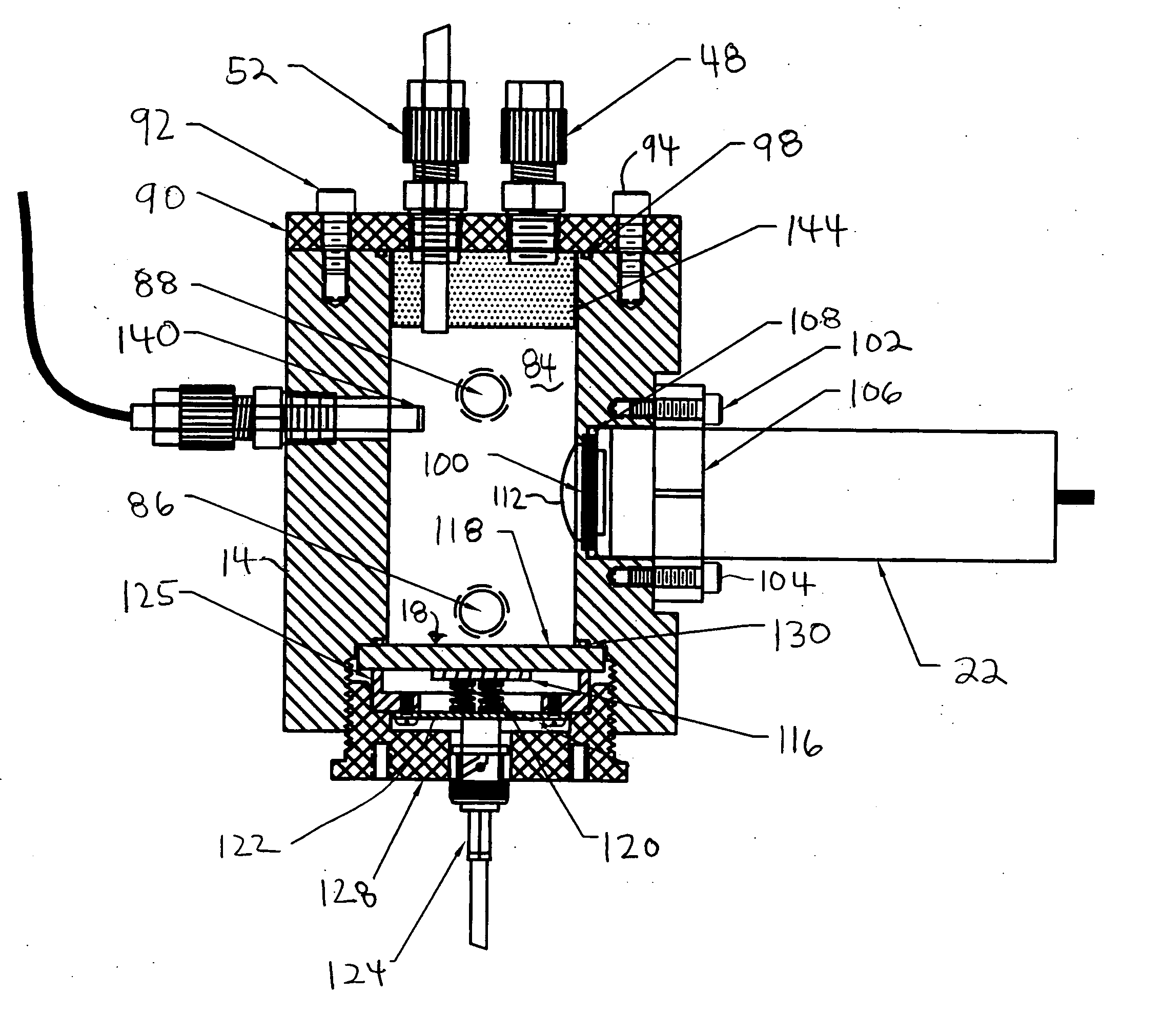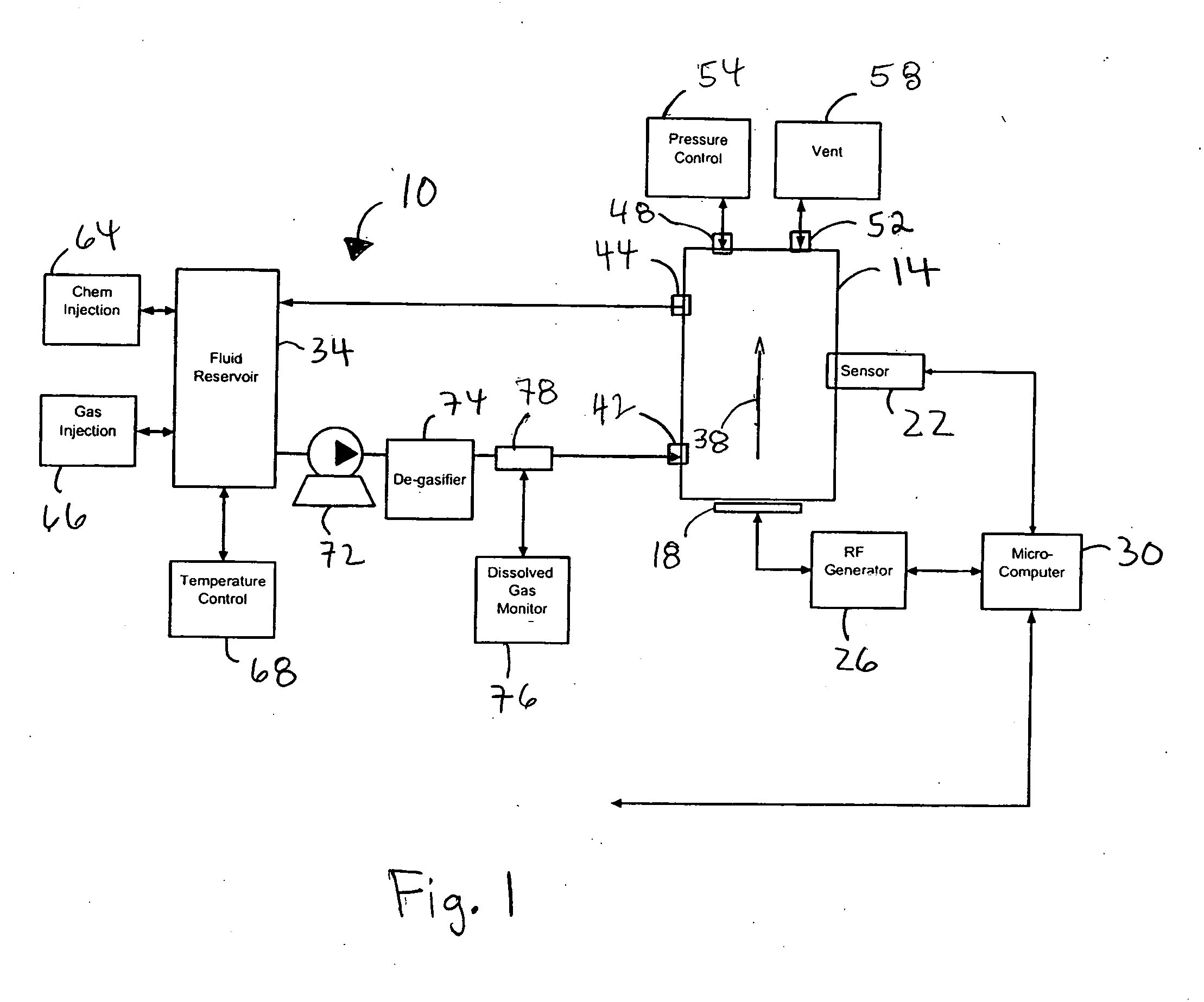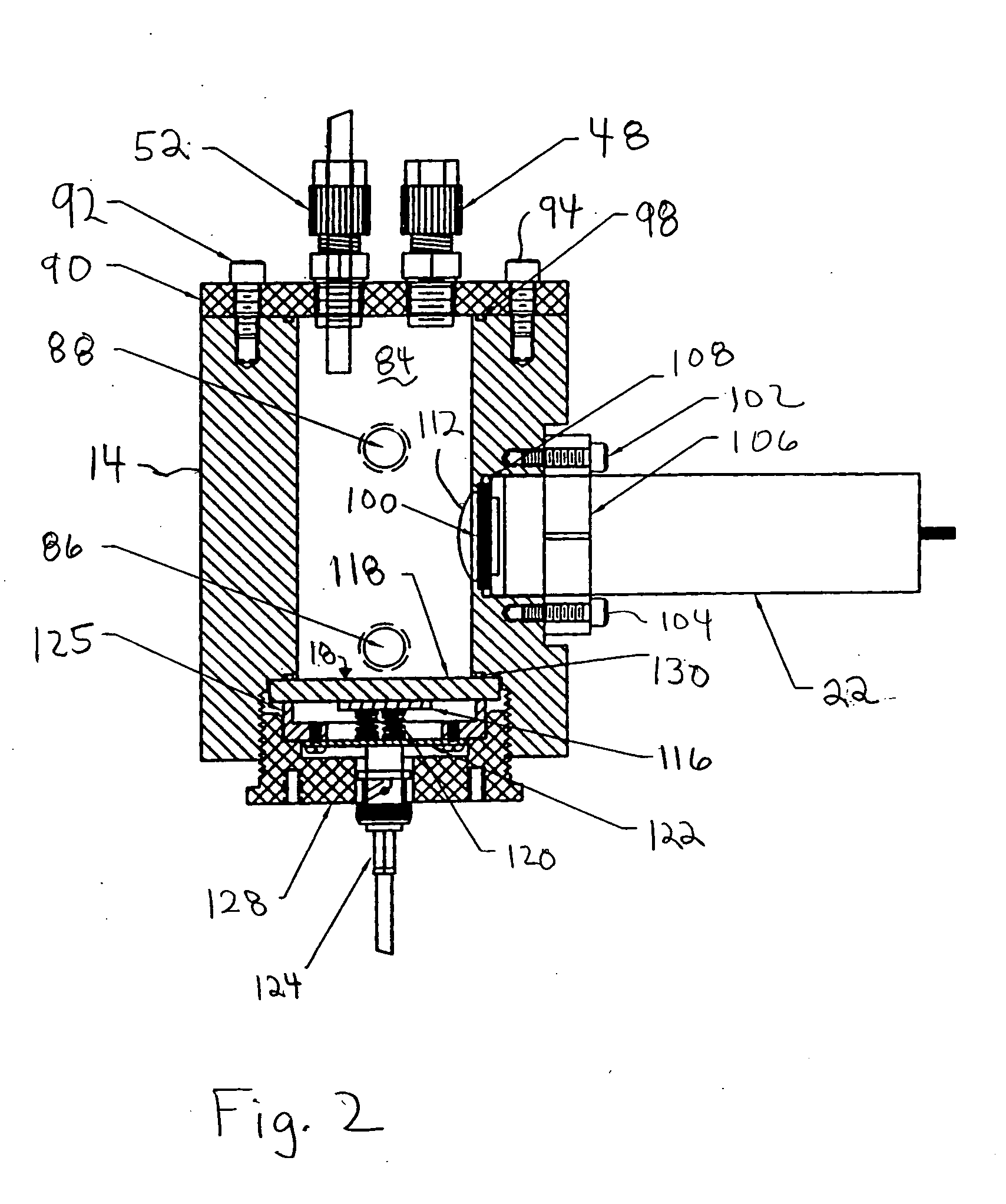Method and apparatus for cavitation threshold characterization and control
a technology of cavitation implosions and thresholds, applied in the direction of water supply installations, instruments, cleaning using liquids, etc., can solve the problems of cavitation cells not being able to be left in the process bath during operation, stable cavitation implosions emitting far less energy, etc., to achieve the effect of reducing chemical consumption
- Summary
- Abstract
- Description
- Claims
- Application Information
AI Technical Summary
Benefits of technology
Problems solved by technology
Method used
Image
Examples
Embodiment Construction
[0029]FIG. 1 illustrates a cavitation characterization system 10 comprised of a cavitation cell 14, an acoustic transducer 18 and a sensor 22. A power supply 26, such as a radio frequency (RF) generator, supplies power to the transducer 18. A microcomputer 30 controls the power supply 26 and collects data from the sensor 22. A fluid reservoir 34 provides a supply of a process fluid to the cell 14.
[0030] The cavitation cell 14 is a small light-tight chamber through which process fluids are caused to flow, usually in the direction of the arrow 38. Thus, the inside of the cell 14 contains a representative sample of the process fluid which is caused to cavitate by an acoustic field supplied by the transducer 18. The process fluid may be from a nearby tank, such as the fluid reservoir 34 in a research application, or it may be a sample of process fluid from a tank in production process equipment. The cell 14 must be sufficiently light-tight so as to allow detection of photon emission le...
PUM
 Login to View More
Login to View More Abstract
Description
Claims
Application Information
 Login to View More
Login to View More - R&D
- Intellectual Property
- Life Sciences
- Materials
- Tech Scout
- Unparalleled Data Quality
- Higher Quality Content
- 60% Fewer Hallucinations
Browse by: Latest US Patents, China's latest patents, Technical Efficacy Thesaurus, Application Domain, Technology Topic, Popular Technical Reports.
© 2025 PatSnap. All rights reserved.Legal|Privacy policy|Modern Slavery Act Transparency Statement|Sitemap|About US| Contact US: help@patsnap.com



